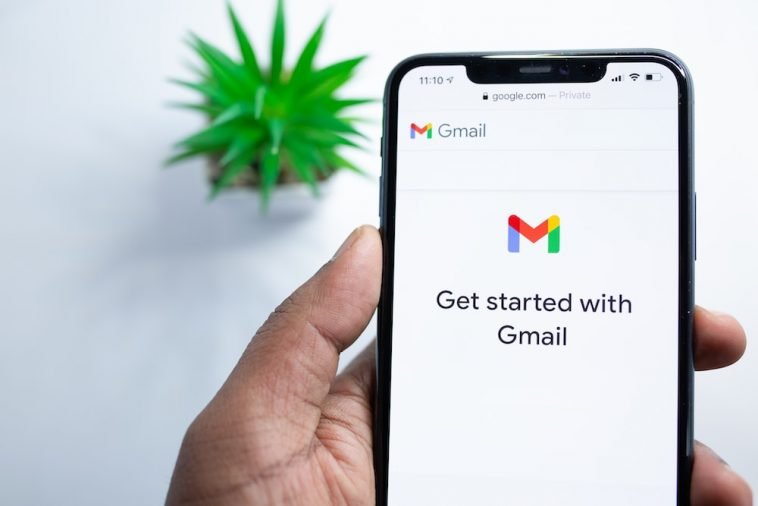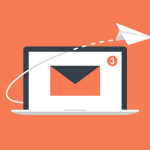Introduction.
When it comes to email communication, Gmail is a widely recognized and widely used platform that offers robust features and functionality.
While Gmail is primarily known as a personal email service, it can also serve as a valuable tool for email marketing campaigns.
Whether you’re a small business owner, a marketer, or an entrepreneur, understanding how to leverage Gmail for email marketing can help you effectively connect with your audience, promote your products or services, and drive conversions.
In this guide, we will provide you with an introduction to using Gmail for email marketing.
We will explore key strategies and features that Gmail offers to enhance your email marketing efforts, including building targeted mailing lists, designing visually appealing emails, personalizing messages, and measuring campaign performance.
With its user-friendly interface and powerful integrations, Gmail provides a versatile platform that can streamline your email marketing activities.
By tapping into its features and employing best practices, you can optimize your email campaigns and achieve your marketing objectives.
Whether you’re new to email marketing or looking to expand your reach with Gmail, this guide will equip you with the knowledge and techniques to harness the full potential of Gmail for your email marketing endeavours.
Let’s delve into the strategies and tools that can help you create engaging emails, nurture relationships, and drive results with Gmail.
What Is Email Marketing?
Email marketing is a digital marketing strategy that involves sending targeted emails to a group of individuals or subscribers to promote products, or services, or engage with the audience.
It is a direct and personalized form of communication between a business or organization and its customers or prospects.
Email marketing campaigns typically involve collecting email addresses from individuals who have shown interest in the business, either by signing up for a newsletter, making a purchase, or subscribing to a website. These email addresses are then used to send relevant and tailored messages to the recipients.
What are The Benefits Of Email Marketing?
In today’s digital era, where communication channels are vast and diverse, email marketing continues to prove its worth as an effective and reliable tool for businesses.
As one of the most direct and personalized forms of communication, email marketing offers a multitude of benefits for organizations looking to engage with their audience, promote their products or services, and build lasting customer relationships.
In this article, we will explore the key advantages of email marketing and why it remains a vital strategy for businesses of all sizes.
1. Targeted and Personalized Communication.
One of the greatest advantages of email marketing is its ability to deliver targeted and personalized messages to specific individuals or segments of your audience.
By collecting relevant data such as demographics, purchase history, and customer preferences, businesses can create highly tailored campaigns that resonate with recipients.
Personalized emails not only grab attention but also increase the chances of conversion, as customers feel valued and understood.
2. Cost-Effective and High ROI.
Email marketing offers an excellent return on investment (ROI) compared to other marketing channels.
It requires minimal upfront costs, as there are no printing or postage expenses involved. With email marketing platforms, businesses can automate the process, saving valuable time and resources.
Additionally, the ability to track and analyze email campaign performance allows for continuous improvement and optimization, maximizing the ROI even further.
3. Increased Conversion and Sales.
Email marketing has consistently proven its ability to drive conversions and boost sales. By delivering targeted offers, discounts, or exclusive promotions directly to customers’ inboxes, businesses can influence purchasing decisions and encourage immediate action.
Furthermore, with proper segmentation and personalization, businesses can ensure that the right message reaches the right audience at the right time, leading to higher engagement and conversion rates.
4. Enhanced Customer Engagement and Loyalty.
Regular and well-crafted email campaigns help businesses establish and nurture relationships with their customers.
By delivering valuable content, such as informative newsletters, industry insights, or helpful tips, businesses can position themselves as industry experts and trusted advisors.
Engaged customers are more likely to stay loyal, make repeat purchases, and even become brand advocates by sharing their positive experiences with others.
5. Measurable and Data-Driven Insights.
Email marketing provides businesses with a wealth of valuable data and insights. Through email analytics, organizations can track key metrics such as open rates, click-through rates, conversion rates, and subscriber behaviour.
This data helps in understanding customer preferences, optimizing campaigns, and refining marketing strategies for better results.
A data-driven approach allows businesses to make informed decisions and continually improve their email marketing efforts.
6. Increased Website Traffic and Brand Awareness.
Effective email marketing campaigns can drive traffic to your website, thus increasing brand visibility and awareness.
By including relevant links and compelling calls-to-action within emails, businesses can direct recipients to specific landing pages or product pages, increasing the likelihood of engagement and conversions.
Additionally, with the potential for recipients to forward or share emails with others, businesses can expand their reach and attract new customers.
7. Automation and Workflow Efficiency.
Email marketing platforms offer automation features that streamline and simplify the entire email marketing process.
With automation, businesses can set up personalized email sequences, welcome series, abandoned cart reminders, and other triggered campaigns.
This not only saves time but also ensures that the right message is delivered to the right person at the most opportune moment.
By automating repetitive tasks, businesses can focus on other important aspects of their operations while maintaining consistent communication with their audience.
8. A Channel of Direct Communication.
Email marketing provides a direct line of communication between businesses and their customers. Unlike social media platforms or search engine algorithms that constantly evolve, businesses have control over their email lists and can directly reach out to their subscribers.
This direct communication allows businesses to deliver important updates, announcements, or customer service information in a timely and efficient manner.
9. Integration with Other Marketing Channels.
Email marketing seamlessly integrates with other marketing channels to create a cohesive and holistic marketing strategy.
Businesses can use email to reinforce and amplify their social media campaigns, promote blog posts or content, announce upcoming events, or even conduct surveys to gather valuable feedback.
By leveraging the power of multiple channels, businesses can create a consistent brand experience and maximize the impact of their marketing efforts.
10. Regulatory Compliance and User Consent.
In recent years, data privacy regulations such as the General Data Protection Regulation (GDPR) and the California Consumer Privacy Act (CCPA) have become increasingly important.
Email marketing provides businesses with the means to comply with these regulations by ensuring proper user consent, providing clear unsubscribe options, and implementing robust data protection measures.
By following best practices and respecting customer privacy, businesses can build trust and maintain a positive reputation.
How Do I Use Gmail For Email Marketing?
Email marketing continues to be a powerful and effective way for businesses to connect with their audience, promote their products or services, and drive conversions.
While Gmail is widely recognized as a personal email service, it can also serve as a valuable tool for email marketing campaigns.
With its user-friendly interface, robust features, and widespread adoption, leveraging Gmail for email marketing can help you reach a broader audience and achieve your marketing goals.
In this article, we will explore how to effectively use Gmail for email marketing and maximize its potential to create engaging emails, personalize messages, manage mailing lists, and measure campaign performance.
1. Building Targeted Mailing Lists.
One of the key foundations of successful email marketing is building a targeted mailing list. Gmail provides various options to manage your contacts and create segmented lists.
Utilize the “Contacts” feature to organize your subscribers, import existing lists, and add new contacts manually.
Consider segmenting your list based on demographics, interests, or engagement levels to send targeted emails tailored to specific audience segments. This helps increase relevancy and engagement with your email campaigns.
2. Designing Visually Appealing Emails.
Eye-catching and visually appealing emails have a higher chance of capturing your subscribers’ attention.
Gmail’s rich text editor allows you to design visually appealing emails without the need for HTML coding.
Experiment with different fonts, colours, and formatting options to create a visually appealing email template that aligns with your brand.
Ensure your emails are mobile-responsive, as a significant portion of users access their emails on mobile devices.
3. Personalizing Messages.
Personalization plays a crucial role in email marketing success. With Gmail, you can leverage merge tags and custom fields to insert dynamic content into your emails.
Personalize your emails by addressing subscribers by their name, including relevant information based on their preferences or previous interactions, and tailoring content based on their specific needs.
Personalization enhances the subscriber experience and increases the likelihood of engagement and conversions.
4. Utilizing Gmail Add-ons and Integrations.
Gmail offers a range of add-ons and integrations that can enhance your email marketing efforts. Explore tools like Mailtrack, which provides email tracking and analytics, or Boomerang, which allows you to schedule emails and set reminders.
Additionally, integrate your Gmail account with customer relationship management (CRM) platforms or email marketing software to streamline your workflow and leverage advanced features for segmentation, automation, and analytics.
5. Measuring Campaign Performance.
Tracking and analyzing the performance of your email campaigns is essential for continuous improvement.
Gmail provides basic metrics, such as open rates and click-through rates, directly within the platform.
However, to gain deeper insights, consider using email marketing software or analytics tools that integrate with Gmail.
These tools provide comprehensive data on engagement metrics, conversion rates, and subscriber behaviour, allowing you to optimize your campaigns based on real-time data.
6. Complying with Email Marketing Best Practices.
While utilizing Gmail for email marketing, it’s important to adhere to industry best practices and regulations.
Familiarize yourself with email marketing regulations such as the CAN-SPAM Act or the General Data Protection Regulation (GDPR) and ensure compliance.
Provide clear opt-in options, include an unsubscribe link in your emails, and respect your subscribers’ privacy preferences.
7. Testing and Iterating.
A/B testing is a valuable technique to optimize your email campaigns. Experiment with different subject lines, email designs, call-to-actions, and content variations to identify what resonates best with your audience.
Analyze the results of your tests and make data-driven decisions to refine your strategies and continually improve the effectiveness of your email marketing efforts.
8. Engaging with Subscribers.
Email marketing is not just about sending promotional messages; it’s also about fostering engagement with your subscribers.
Use Gmail’s features to encourage feedback, invite subscribers to participate in surveys or polls, and create opportunities for two-way communication.
Actively respond to inquiries and engage in meaningful conversations to build a strong relationship with your audience.
By nurturing engagement, you can cultivate brand loyalty and increase the effectiveness of your email campaigns.
9. Automating Email Workflows.
Gmail offers automation capabilities that can save you time and improve the efficiency of your email marketing efforts.
Set up automated email workflows for welcome messages, abandoned cart reminders, or post-purchase follow-ups.
Automation helps you deliver timely and relevant messages to your subscribers, increasing the chances of conversion and customer retention.
Explore Gmail’s native automation features or integrate with external automation tools to streamline your email marketing workflows.
10. Ensuring Email Deliverability.
Email deliverability is crucial for the success of your email marketing campaigns. Gmail has robust spam filters in place to protect its users from unsolicited or low-quality emails.
To ensure your emails land in the primary inbox rather than the spam folder, follow email deliverability best practices.
Use double opt-in to verify subscriber consent, maintain a healthy mailing list by regularly removing inactive or bounced email addresses, and avoid spam trigger words or deceptive practices.
Monitoring your email deliverability metrics and making necessary adjustments will help improve your chances of reaching your subscribers’ inboxes.
11. Staying Ahead with Gmail Updates.
Gmail regularly updates its features and functionalities to enhance user experience and security. Stay informed about these updates to leverage new capabilities that can benefit your email marketing campaigns.
Explore Gmail’s official blog, help centre, or community forums to learn about the latest developments and tips for optimizing your email marketing strategies within the Gmail ecosystem.
12. Continuous Learning and Optimization.
Email marketing is an iterative process that requires continuous learning and optimization. Analyze the performance metrics of your email campaigns, such as open rates, click-through rates, and conversions, and use the insights to refine your strategies.
Test different elements, experiment with new ideas, and adapt your approach based on the data you collect.
By continually learning and optimizing, you can maximize the effectiveness of your Gmail email marketing campaigns.
Conclusion.
Gmail offers a range of features and functionalities that can elevate your email marketing efforts.
By building targeted mailing lists, designing visually appealing emails, personalizing messages, utilizing add-ons and integrations, measuring campaign performance, and following best practices, you can leverage Gmail as a powerful platform for connecting with your audience and achieving your marketing goals.
Stay proactive, stay creative, and harness the potential of Gmail to drive your email marketing success.






GIPHY App Key not set. Please check settings